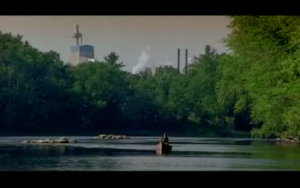Readings
Different Approaches to Nature

Key Terms
Some approaches to nature aim to address the fair treatment and meaningful involvement of all people with respect to the development, implementation and enforcement of environmental laws, regulations, and policies. This approach has been termed “environmental justice.”
Proponents of environmental justice generally view the environment as encompassing where populations live, work, and play, pray and learn. And, aim to redress pollution, toxicity, and meet the everyday needs of populations across the world.
Environmentalism vs. Environmental Justice
The first and more common usage of the phrase environmental justice describes a focus on the distribution of environmental benefits and burdens. Some approaches make a distinction between environmental Justice and other forms of environmentalism by drawing a line between how the two approaches consider the needs within various societies and human populations. Also, some have proposed that environmentalism for a very long time gave precedence to resorting and protecting nature– and less on time on human populations. Hence, the distinctinction between the two terms.
Within some interdisciplinary fields of study that includes (but is not limited to) theories of the environment, debates about who owns the environment, how the environment is controlled and how populations can be treated are possible. The area of study has offered new approaches to environmental law and governance, environmental policy and planning, development, sustainability, and ecology.
Some have point out where in the world communities in proximity of environmentally hazardous or degraded environments reside and contend with toxic waste, pollution and urban decay.
For example, the scholarship of Robert Bullard and the youtube video below provides examples of the parameters used by some specialists working in this area.
To see the work in this area provided by Exxon Mobile click the link from The Harvard Gazette, by Alice McCarthy
Original source citation: G. Supran et al., Assessing ExxonMobil’s global warming projections. Science 379, eabk0063 (2023). DOI: 10.1126/science.abk0063
https://www.youtube.com/watch?v=kVhS2ASZoeo
On the international scene, environmental consideration have raised question about dirty technologies, dangerous chemicals or waste materials (pollution havens).
The work of Dr. Brendan Coosaet focuses on the interconnectedness of biodiversity. In the youtube video below Dr. Coosaet looks at how valuable biodiversity has been diverted.

